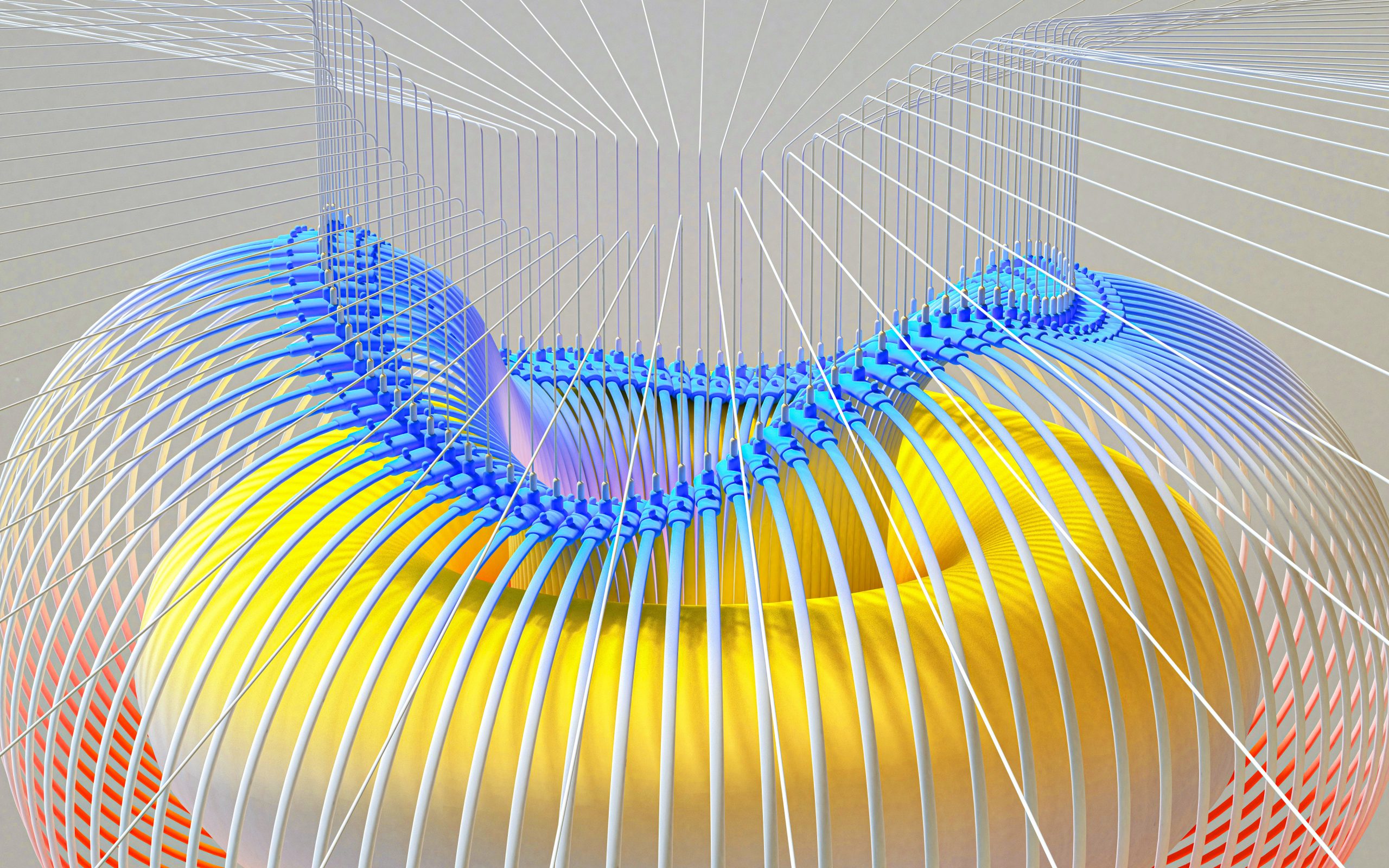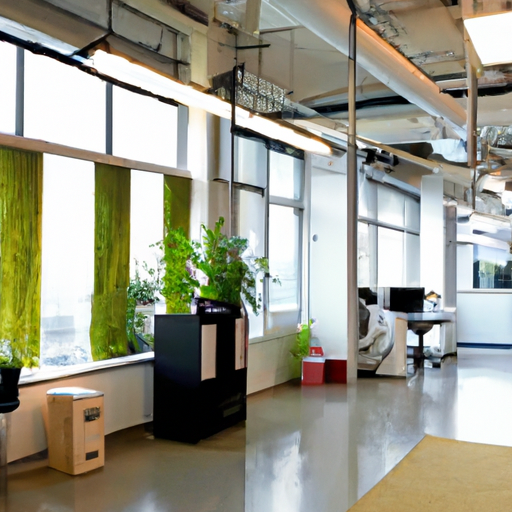In today’s climate-conscious world, sustainable workplace design has become more than just a trend; it is a necessity. Businesses are increasingly recognizing the importance of creating environmentally-friendly workspaces that not only promote energy efficiency and resource conservation but also improve employee well-being and productivity. From incorporating renewable materials and green technologies to optimizing natural lighting and indoor air quality, sustainable workplace design can have a transformative impact on both business operations and the environment. In this article, we will explore the key elements of sustainable workplace design and its advantages for businesses, while addressing some common questions that arise in this field.
Sustainable Workplace Design
Sustainable workplace design is an essential aspect of creating a productive and environmentally conscious work environment. It involves designing and constructing office spaces that are energy-efficient, environmentally friendly, and promote employee well-being. By implementing sustainable workplace design principles and practices, businesses can reduce their environmental impact, enhance employee health and productivity, and save on costs. In this article, we will explore the importance of sustainable workplace design, the benefits it brings, the key principles involved, factors to consider, and the role of technology. We will also discuss legal considerations related to sustainable workplace design.
Why is Sustainable Workplace Design Important?
Environmental Impact
One of the primary reasons sustainable workplace design is important is its positive impact on the environment. Traditional office spaces contribute significantly to climate change and resource depletion. By adopting sustainable design principles, businesses can minimize their carbon footprint, reduce energy consumption, and conserve resources. This can help mitigate the effects of global warming and promote a more sustainable future.
Employee Well-being and Productivity
Providing a healthy and comfortable work environment is crucial for promoting employee well-being and productivity. Sustainable workplace design emphasizes the use of natural light, improved air quality, and the integration of greenery to enhance employee satisfaction and reduce stress levels. Studies have shown that employees working in sustainable workspaces experience higher levels of job satisfaction, creativity, and productivity, leading to improved overall performance.
Cost Savings
Implementing sustainable workplace design strategies can result in significant cost savings for businesses. By using energy-efficient lighting systems, optimizing heating, ventilation, and air conditioning (HVAC) systems, and adopting renewable energy sources, companies can reduce their energy consumption and lower utility bills. Additionally, implementing waste management and recycling programs can reduce disposal costs. These cost savings can contribute to a company’s bottom line and improve its financial stability.
Regulatory Compliance
In many jurisdictions, there are laws and regulations in place that require businesses to comply with certain environmental standards. Sustainable workplace design helps companies meet these regulatory requirements and avoid penalties or legal issues. By adhering to environmental regulations, businesses can maintain a positive reputation and attract environmentally conscious clients and partners.

Benefits of Sustainable Workplace Design
Reduced Carbon Footprint
One of the significant benefits of sustainable workplace design is the reduction of carbon footprint. By incorporating energy-efficient technologies and sustainable practices, such as using renewable energy sources and reducing energy consumption, businesses can minimize their greenhouse gas emissions and contribute to environmental preservation.
Enhanced Employee Health
Sustainable workplace design prioritizes employee health and well-being. Improved indoor air quality, access to natural light, and the incorporation of biophilic elements, such as plants and greenery, create a healthier and more pleasant workspace. This can result in reduced sick leave, improved employee morale, and increased job satisfaction.
Increased Productivity
A well-designed and sustainable work environment can significantly impact employee productivity. Studies have shown that natural lighting, comfortable temperatures, and access to outdoor views can enhance concentration, creativity, and overall job performance. By investing in sustainable workplace design, businesses can create an environment that fosters productivity and helps employees reach their full potential.
Improved Reputation
Adopting sustainable workplace design practices can enhance a company’s reputation and create a positive image in the eyes of clients, employees, and the community. By demonstrating a commitment to environmental responsibility, businesses can attract environmentally conscious customers and partners, which can lead to increased business opportunities and brand loyalty.
Long-term Cost Savings
While the initial implementation of sustainable workplace design may require some upfront investment, the long-term cost savings can outweigh the initial expenses. By reducing energy consumption, minimizing waste generation, and implementing efficient resource management practices, businesses can save on operational costs over time. These cost savings can contribute to a company’s financial stability and competitiveness.
Principles of Sustainable Workplace Design
Integrate Nature and Biophilic Design
The integration of nature and biophilic design in the workplace is a key principle of sustainable workplace design. Biophilic design incorporates elements of nature, such as plants, natural materials, and natural light, into the workspace. This connection with nature has been shown to reduce stress, improve cognitive function, and enhance overall well-being.
Optimize Natural Lighting
Maximizing the use of natural light is another important principle of sustainable workplace design. Natural light not only reduces the need for artificial lighting but also offers numerous benefits to employees. Exposure to natural light has been linked to improved mood, increased productivity, and better sleep quality. Designers should consider the placement of windows, use of skylights, and light-reflecting surfaces to optimize natural lighting in the workspace.
Energy-Efficient Heating, Ventilation, and Air Conditioning (HVAC) Systems
Implementing energy-efficient HVAC systems plays a crucial role in sustainable workplace design. These systems should be designed to provide thermal comfort while minimizing energy consumption. Features such as programmable thermostats, zoned heating and cooling, and energy recovery ventilation can help reduce energy usage and maintain a comfortable working environment.
Water Efficiency and Conservation
Promoting water efficiency and conservation is essential in sustainable workplace design. Implementing measures such as low-flow faucets, water-efficient fixtures, and rainwater harvesting systems can significantly reduce water consumption. Additionally, educating employees on water conservation practices and implementing leak detection programs can help further minimize water wastage.
Flexible and Adaptable Spaces
Creating flexible and adaptable workspaces is a fundamental principle of sustainable workplace design. These spaces allow for easy reconfiguration and adaptability as the needs of the business change over time. This reduces the need for extensive renovations and ensures that the workspace can accommodate changing work dynamics and practices.

Factors to Consider in Sustainable Workplace Design
Location and Access to Public Transportation
The location of a workplace can greatly impact its sustainability. Choosing a location that is easily accessible by public transportation can encourage employees to use greener commuting options, reducing the environmental impact of daily travel. Proximity to public transportation also promotes a sense of community and reduces individual car usage.
Site Selection and Land Use
When designing a sustainable workplace, site selection and land use planning are crucial considerations. Prioritizing brownfield redevelopment or infill sites can help minimize the destruction of natural habitats. Preservation of existing green spaces, incorporation of green roofs, or the creation of outdoor recreational areas can further enhance the sustainability and overall appeal of the workplace.
Building Orientation and Design
The orientation and design of the building significantly impact its energy efficiency. By utilizing passive solar design principles, such as strategic placement of windows, shading devices, and insulation, businesses can reduce energy consumption for heating and cooling purposes. Additionally, incorporating renewable energy generation systems, such as solar panels or wind turbines, can further offset the building’s energy requirements.
Daylight and Views
Providing access to natural light and views is essential for an environmentally conscious and employee-friendly workplace. The availability of daylight has been linked to increased productivity, improved mood, and reduced reliance on artificial lighting. Designers should incorporate methods to optimize natural light penetration while minimizing glare and excessive heat gain.
Thermal Comfort
Maintaining optimal thermal comfort in the workplace is vital for employee satisfaction and productivity. Effective insulation, appropriate fenestration systems, and efficient HVAC systems all contribute to maintaining a comfortable indoor temperature. Designers should consider factors such as insulation materials, glazing options, and occupant control over temperature to ensure thermal comfort while minimizing energy consumption.
Noise Control
Noise pollution within the workplace can significantly impact employee well-being and productivity. Sustainable workplace design should incorporate measures to minimize noise transmission, such as acoustic ceiling tiles, sound-absorbing materials, and thoughtful spatial planning. Providing quiet zones and designing acoustically separate areas can create a more conducive and productive work environment.
Ergonomics and Biophilic Elements
Ensuring ergonomic workspaces and incorporating biophilic elements are vital for employee well-being. Ergonomic furniture, such as adjustable desks and supportive chairs, can promote good posture and reduce the risk of musculoskeletal issues. Biophilic elements, such as indoor plants and natural materials, can create a calming and visually appealing environment that contributes to improved employee health and satisfaction.
Materials Selection
Choosing sustainable and environmentally friendly materials is a critical consideration in sustainable workplace design. Opting for materials with a low carbon footprint, such as recycled or locally sourced materials, helps reduce the environmental impact of construction and ongoing maintenance. Additionally, selecting materials that are low in volatile organic compounds (VOCs) and non-toxic contributes to better indoor air quality and employee health.
Sustainable Materials and Resources
Use of Recycled Materials
Incorporating recycled materials into the design and construction of the workplace is an important aspect of sustainable workplace design. Utilizing recycled materials reduces the demand for new resources and helps divert waste from landfills. Examples of recycled materials that can be used include recycled glass, steel, plastic, and wood products.
Renewable Resources
Choosing renewable resources for construction and furnishing materials is another crucial consideration. Materials such as certified sustainable wood, bamboo, cork, and natural fibers can be used instead of non-renewable resources. By using renewable resources, businesses can decrease their impact on biodiversity and promote responsible resource management.
Sustainable Furniture and Fixtures
Opting for sustainable furniture and fixtures contributes to sustainable workplace design. Furniture made from recycled materials or sustainably sourced wood, for example, can significantly reduce the carbon footprint associated with furniture production. Selecting fixtures that are water-efficient and have a long lifespan also helps minimize resource consumption.
Low VOC and Non-Toxic Materials
The use of low VOC (volatile organic compounds) and non-toxic materials is essential for creating a healthy and safe workspace. VOCs, commonly found in paint, adhesives, and carpeting, can release harmful chemicals into the air, leading to indoor air pollution and adverse health effects. Choosing low VOC or non-toxic alternatives ensures a healthier indoor environment for employees.
Energy Efficiency in the Workplace
Energy-Efficient Lighting Systems
Implementing energy-efficient lighting systems is a key aspect of sustainable workplace design. Switching to LED lighting, installing occupancy sensors, and using task lighting can significantly reduce energy consumption. Additionally, incorporating natural light through well-placed windows and skylights can reduce the need for artificial lighting during daylight hours.
Smart Building Automation Systems
Smart building automation systems can enhance energy efficiency in the workplace. These systems utilize sensors and controls to optimize and adjust energy usage based on occupancy levels, ambient light, and other factors. Smart thermostats, automated shading, and efficient HVAC control systems work together to minimize energy waste and maintain an optimal indoor environment.
HVAC Systems and Controls
Heating, ventilation, and air conditioning (HVAC) systems in the workplace account for a significant portion of energy consumption. Implementing energy-efficient HVAC systems, such as high-efficiency units, variable speed drives, and zone controls, can significantly reduce energy usage. Regular maintenance and optimization of HVAC systems also contribute to improved energy efficiency.
Insulation and Building Envelope
Proper insulation and an effective building envelope play a crucial role in energy efficiency. Insulating materials, such as foam insulation, help minimize heat transfer, reducing the need for excessive heating and cooling. The building envelope, including windows, doors, and insulation, should be designed and installed to prevent air leaks and minimize energy loss.
Renewable Energy Sources
Incorporating renewable energy sources into the workplace can significantly reduce reliance on fossil fuels and grid energy. Installing solar panels, wind turbines, or using geothermal systems can generate clean and renewable energy on-site. These renewable energy sources can offset electricity consumption and contribute to a greener and more sustainable workplace.
Waste Management and Recycling
Waste Audits and Minimization
Conducting waste audits and implementing waste minimization strategies are essential in sustainable workplace design. Assessing the types and quantities of waste generated allows businesses to identify areas for improvement. By minimizing waste generation through source reduction, recycling, and composting, companies can significantly reduce their environmental impact.
On-site Composting and Recycling Programs
Implementing on-site composting and recycling programs is an effective way to divert waste from landfills. Composting organic waste, such as food scraps and yard waste, not only reduces landfill space but also produces nutrient-rich soil amendments. Recycling programs should be established for various waste streams, including paper, plastic, glass, and metal, to ensure efficient resource recovery.
E-waste Management
Proper management of electronic waste (e-waste) is crucial in sustainable workplace design. E-waste, including old computers, monitors, printers, and other electronic devices, often contains hazardous materials that can harm the environment if not disposed of properly. Businesses should establish e-waste recycling programs to ensure responsible and safe disposal or recycling of these items.

Indoor Environmental Quality
Air Quality and Ventilation
Providing good indoor air quality and proper ventilation is essential for a healthy and productive work environment. Efficient HVAC systems with proper filtration can help remove pollutants, such as dust, allergens, and volatile organic compounds (VOCs), from the air. Regular maintenance and cleaning of ventilation systems also contribute to improved indoor air quality.
Thermal Comfort and Acoustics
Maintaining optimal thermal comfort and managing noise levels are important factors in sustainable workplace design. Insulation, efficient HVAC systems, and occupancy controls should be employed to ensure comfortable temperatures. Acoustic considerations, such as sound-absorbing materials, strategic spatial planning, and minimizing noise transmission, create a quieter and more focused work environment.
Natural Indoor Environment
Incorporating biophilic elements and creating a natural indoor environment is a key principle of sustainable workplace design. The presence of plants, natural materials, and access to outdoor views can positively impact employee well-being, reduce stress levels, and improve overall satisfaction. Bringing nature indoors through green walls, indoor gardens, or living artwork can create a more refreshing and inspiring workspace.
Green Cleaning Practices
Adopting green cleaning practices contributes to maintaining a healthy indoor environment. Using environmentally friendly cleaning products reduces the exposure to harmful chemicals and minimizes indoor air pollution. Additionally, implementing proper waste management for cleaning materials, such as recycling or resource recovery programs, further promotes sustainability.
Biophilic Elements
Integrating biophilic design elements into the workplace strengthens the connection between employees and nature. Incorporating natural materials, textures, and colors, as well as providing access to views of nature, can improve well-being, reduce stress, and enhance creativity and productivity. Including elements such as water features, living walls, or natural artwork can create a more visually appealing and engaging workspace.
The Role of Technology in Sustainable Workplace Design
Technology plays a significant role in sustainable workplace design by optimizing energy usage, enhancing communication, and improving efficiency. Building automation systems, occupancy sensors, and smart thermostats contribute to energy efficiency by automating and optimizing energy consumption based on occupancy levels. Collaboration software and video conferencing tools promote remote work and reduce the need for extensive travel. Additionally, cloud-based document management systems support paperless workflows, reducing the use of physical resources.
Legal Considerations in Sustainable Workplace Design
Compliance with Environmental Regulations
Complying with environmental regulations is crucial in sustainable workplace design. Laws may require businesses to meet certain energy efficiency standards or implement waste management practices. Understanding and adhering to these regulations is essential to avoid penalties and legal issues.
Accessibility and Universal Design
Ensuring accessibility and universal design is an important consideration in sustainable workplace design. Businesses must comply with accessibility requirements to provide equal opportunities for individuals with disabilities. Properly designed entrances, accessible workstations, and inclusive facilities contribute to an inclusive and diverse work environment.
Health and Safety Regulations
Sustainable workplace design should also consider health and safety regulations. Implementing measures to prevent workplace hazards, ensuring proper ventilation, and providing ergonomic workstations contribute to a safe and healthy work environment. Compliance with health and safety regulations protects the well-being of employees and avoids legal liabilities.
Green Building Certifications and Incentives
Obtaining green building certifications, such as LEED (Leadership in Energy and Environmental Design), can provide recognition and credibility to sustainable workplace designs. These certifications validate the environmental performance and sustainability efforts of the workspace. Additionally, businesses may be eligible for incentives, such as tax credits or grants, for implementing sustainable workplace design practices.
By implementing sustainable workplace design principles, businesses can create a work environment that is not only environmentally responsible but also promotes employee well-being and productivity. From reducing the carbon footprint to minimizing waste generation and optimizing energy usage, sustainable workplace design brings numerous benefits. By considering factors such as location, materials selection, and technology integration, businesses can create a workspace that aligns with their sustainability goals and legal requirements. Investing in sustainable workplace design is an investment in the future, benefiting both the business and the planet.
FAQs
-
Why is sustainable workplace design important? Sustainable workplace design is important for several reasons. It reduces the environmental impact of office spaces, promotes employee well-being and productivity, saves costs in the long run, and ensures compliance with environmental regulations.
-
What are the benefits of sustainable workplace design? The benefits of sustainable workplace design include a reduced carbon footprint, enhanced employee health, increased productivity, improved reputation, and long-term cost savings for businesses.
-
What are the principles of sustainable workplace design? The principles of sustainable workplace design include integrating nature and biophilic design, optimizing natural lighting, using energy-efficient heating, ventilation, and air conditioning (HVAC) systems, prioritizing water efficiency and conservation, and creating flexible and adaptable spaces.
-
What factors should be considered in sustainable workplace design? Factors to consider in sustainable workplace design include location and access to public transportation, site selection and land use, building orientation and design, daylight and views, thermal comfort, noise control, ergonomics and biophilic elements, and materials selection.
-
What role does technology play in sustainable workplace design? Technology plays a significant role in sustainable workplace design by optimizing energy usage, enhancing communication, and improving efficiency. Building automation systems, collaboration software, and cloud-based document management systems contribute to energy efficiency and resource conservation.
